A Hawaiian Airlines flight bound for Honolulu made an emergency return to Seattle-Tacoma International Airport shortly after takeoff on Monday. The incident raised immediate concerns about passenger safety and operational reliability as the FAA, Hawaiian Airlines, and its parent Alaska Airlines began investigating the cause. While no injuries were reported, the situation left many wondering what happened and how the airline responded.
The incident on Hawaiian Flight 21.
Hawaiian Airlines Flight 21, an Airbus A330 carrying 273 passengers and 10 crew members, declared an emergency and returned to Seattle less than an hour after departure when the crew reported an issue in the flight deck. It departed two hours late for unknown reasons, although the aircraft serving the fight arrived in Seattle the prior day.
Early FAA reports described the problem as smoke in the cockpit, but the airline later clarified it was fumes with no visible smoke present. This discrepancy has prompted further investigation into what unfolded on board.
The plane landed safely, and emergency personnel, including fire and medical teams, met the aircraft at the gate. Passengers and crew deplaned without incident. A subsequent inspection by the Port of Seattle Fire Department revealed no visible smoke or lingering odors. Hawaiian Airlines removed the aircraft from service for further investigation and arranged for a replacement plane to complete the flight to Honolulu the following day.
Smoke vs. fumes: the discrepancy.
The discrepancy between initial FAA reports of smoke and Hawaiian Airlines’ later clarification of fumes has raised additional questions. While no injuries occurred, such discrepancies highlight the importance of clear communication and thorough investigation in ensuring the safety of passengers and crew. The FAA’s findings will address these concerns and determine whether procedural or equipment changes are needed.
Timing amid the Alaska-Hawaiian merger.
This incident occurred during a pivotal period for Hawaiian Airlines, which is undergoing operational integration with Alaska Airlines following its purchase by the Seattle company in September. At the time of the merger announcement, Hawaiian Airlines CEO Joe Sprague emphasized to BOH editors the importance of maintaining safety and focus during what he acknowledged would be a challenging transition for the airlines.
The quick and transparent response to this emergency by Hawaiian/Alaska reflects their commitment to those values. Still, it also underscores the complexity of maintaining high standards during a significant operational overhaul.
Broader implications for passengers.
For Hawaii-bound travelers, the incident serves as a reminder of the complexities of modern air travel. It also reflects the challenges airlines face in managing in-flight safety while navigating operational transitions like this acquisition. Hawaiian Airlines’ ability to maintain trust during this period depends on the transparency displayed.
Toxic air concerns on other Hawaii flights.
While unclear whether the recent fumes incident aboard Hawaiian Airlines Flight 21 is connected to broader concerns, toxic air issues on flights to and from Hawaii have been increasingly highlighted in recent years. Some passengers and crew have reported symptoms such as dizziness, headaches, and difficulty breathing, raising questions about air quality on commercial aircraft.
Toxic air events, often referred to as “fume events,” occur when engine oil, hydraulic fluid, or other substances contaminate the air supply in the cabin or cockpit. These incidents are rare but can have serious implications for passenger and crew safety. Industry experts suggest that the design of modern aircraft, many of which rely on air drawn from the engines, can sometimes lead to contamination under certain conditions.
While these events remain statistically uncommon, they highlight the need for airlines to implement robust procedures for identifying and addressing potential air contamination.
Although there’s no evidence linking the Hawaiian Airlines incident to these toxic air concerns, it serves as a timely reminder of the importance of thorough investigations into all fume-related events in order to maintain confidence in air travel safety.
Looking ahead.
As the investigation continues, the aviation community and travelers alike are, of course, watching closely. Hawaiian Airlines, now integrating under Alaska Airlines’ wing, must continue demonstrating its ability to maintain the high safety standards passengers expect from the nearly century-old company, particularly during this transitional period. The findings from this incident could shape how airlines approach operational changes and in-flight safety going forward.
We welcome your input.
BOH © photo of Hawaiian A321neo taken last week at Lihue, Kauai.
Get Breaking Hawaii Travel News
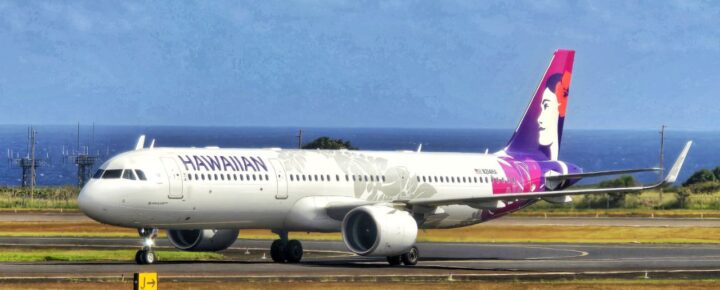
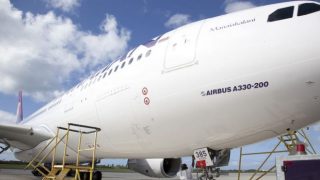
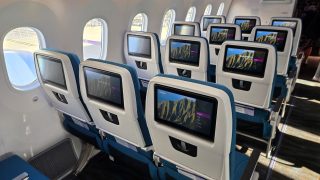

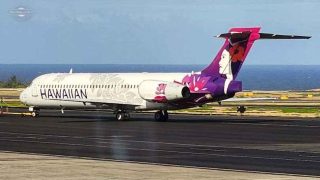
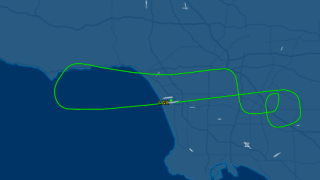
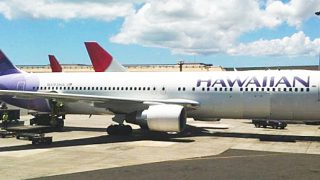
Why couldn’t Alaska Airlines have stepped up and re-accommodated some of the passengers on earlier flights? Alaska operates multiple daily flights to the islands from Seattle. I realize both are still operating under their own certificates but Alaska does own Hawaiian now and the flight returned to Alaska’s hub and headquarters. And yet they offered no help? Perhaps it’s because Hawaiian is on the “wrong side of this merger??”
They only operate as one when it benefits them otherwise they hide behind their “certificates.” The opportunity for lots of goodwill is lost daily and it’s why, once my miles are used up, these two airlines will be last on my list . . .
Aloha, It would be good to put a photo of the exact plane type (A 330)that experienced the issue. Congratulations however for not putting photos of your less favorite airlines in the story. It would be interesting to see which airlines have the most aborted flights to/from the mainland to Hawaii in the context of total number of flights. This would allow travelers to make a more informed decision on Aircraft type and airline if they are concerned about safety.
My daughters flight was cancelled on HA last flight out LAX to HNL on Christmas eve. Just a text message saying it was cancelled. No rebooking offered or additional compensation! A big “Bah Humbug” from HA! HA started losing their Aloha long before the Alaska saved them from insovency!
To those who are complaining about the cancelation of the flight and delays etc.. I suppose you’d be perfectly happy with a “disaster” over open water!??
These pilots (both airlines) have minutes or seconds to determine the “safest” course of action for passengers and crew.
They are only too aware of the Logistical, Financial consequences of returning or reroute to safe havens..
Air travel is nothing short of a Miracle, remember that..
Exactly. Those that consider commercial airline flying equal to going to the store for groceries and are more interested in the “Vibes” they get from crew and other passengers than the incredible safety record of the western countries’ airlines … need to grow up. That includes BOH.
Having said that, all airlines are not equal. The recent Korean disaster brings back nightmares after (3) high time Korean captains couldn’t land a 777 at SFO without a Glideslope on a severe clear day, landed short with several casualties.
Be very careful when you choose your next airline.
Did Hawaiian provide funds/vouchers for passengers having to get accommodations for another night?
Most likely they were.
We need to stop thinking about the airlines as the “enemy!?” It wasn’t that long ago that Most people couldn’t even afford to fly within the U.S. let alone to Hawaii and International markets (ships only)…
Be grateful we’ve got what we’ve got…
Not a biggie’ … it happens … happened to me probably 10-15 times over a 30 year airline career and 4-5 in the USN that was (obviously) in a totally different environment.
If passenger safety is your priority … and it is … then the flight crew — especially the “Captain, my Captain” who made the ultimate decision to return to SEA — did Exactly the right thing when they elected to RTB at SEA …
Maybe ’cause when it comes right down to it … they have the “Right Stuff” … ???
Aloha ‘Oe once again … (smiles)
Must be a slow news day. The bottom line is the crew did the right thing. Period. They know what a lot of bad things in an airplane smell like. Where there’s smoke, there’s fire. When you smell something that could be smoke, you assume the worst and land. Bringing in everything including “the kitchen sink” isn’t necessary.
It wasn’t smoke though. Fumes doesn’t equal smoke
Mikey G. You are certainly kidding aren’t you?
We were passengers on this flight. This plane had been in Seattle from the day before the flight in maintenance, and we started with a 2 hour delay that came via text the night before. We never got to 10,000 and started the turnback within just a few mins after takeoff. The Hawaiian ground staff gets credit for being empathetic and professional and did their best to profess 270+ people with a “day room” and meal vouchers. The meal vouchers could only be used in the airport. Rebooking options were few, and the Delta “red coat” was rude and unprofessional. We stayed on the retimed flight that used the inbound plane from Maui, and the original crew came back after rest. It wasn’t Hawaiian’s best day, but the ground staff did their best. We all got a 1/2 sheet on how to get a $500 future travel voucher.
Perhaps you’re “forgetting” the HAL flight crew in your comment???
The “Hawaiian ground staff (that) gets credit” doesn’t fly the airplane nor do they make the decisions that affect you much, much more than “meal vouchers” and/or a connecting flight voucher … yes ???
Just sayin’ … and have a Happy New Year … with compliments (I’m sure) of that squared-away HAL flight crew.
Recently BOH published an article criticizing Southwest Airlines for not being able to quickly respond to emergency flight replacements because of their operating model within Hawaii. Explain to me how Hawaiian could not re-accommodate passengers to Hawaii until the next day, after an in-flight emergency necessitated a return to SeaTac, which is Alaska’s headquarters and hub? Seems that the same problem Southwest has within Hawaii, Hawaiian experiences on the mainland, despite the Alaskan merger.
It’s more than just HAL … it’s the FAA … it’s crew members available at the base … and it’s aircraft availability at the base or what’s possible w/ inbound aircraft …
It’s the “Big Picture” that drives the “machine” and the airline …